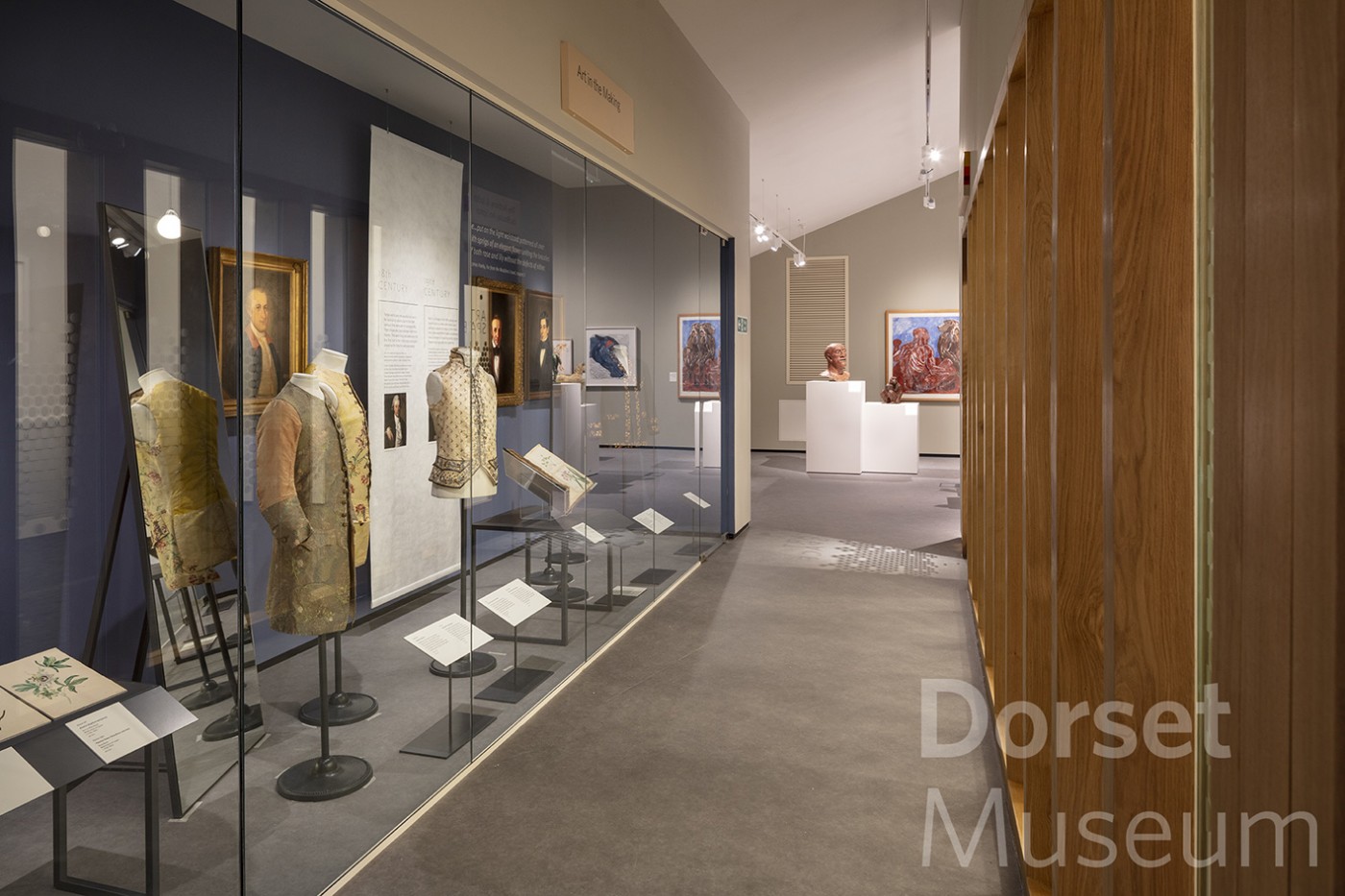- youtube
- bluesky
- Home
- About
- Costume Journal
- Membership
- Conference & Events
- Grants & Awards
- News & Social
Awarded to Dorset County Museum for the conservation, and mounting of three 18th century men’s waistcoats as part of their 'Art of Men's Waistcoats’ exhibition in the new gallery of the newly redeveloped museum in Dorchester.
Conservation report:
Thanks to the generous support of the Costume Society, a stunning display of men’s waistcoats features in the newly developed Dorset Museum. The Elizabeth Hammond Conservation Grant has enabled the Museum to display three of its finest 18th century waistcoats and interpret them with gallery graphics, images and illustrations. Exhibited in a new climate-controlled showcase for light-sensitive objects, the ‘Art of Men’s Waistcoats’ is the first temporary exhibition in the new Artists’ Dorset gallery.
Mounting:
Morwena Stephens (based at the Royal Albert Memorial Museum & Art Gallery, Exeter) was identified as the best person to conservation mount these objects. The waistcoats had suffered from long-term storage, were extremely fragile with numerous holes, splits, and shattered silk. Morwena had skilfully conserved them and knew where they needed the most support. She mounted them on acid free conservation-grade mannequins produced by the Proportion Museum Workroom range by Kessler. The closest bustform shapes Kesslers were able to supply were 20th -21st century so had to be modified to properly support the waistcoats. This included adapting the mannequin for the embroidered Bond family waistcoat (below), cutting away the sides of the mannequin to narrow the shoulders. The holes were then filled with Plastazote foam, covered with polyester wadding and conservation fabric. Further padding was applied to the shoulders, hips, back and neck to support the waistcoat. The neck was re-covered in Création Baumann fabric.
Also worn by a member of the Bond family is a rare, sleeved waistcoat from 1710-1720, made from silk brocaded in a floral and leaf pattern, contrasting with the salmon-pink sleeves. Morwena skilfully adapted the mannequin to the exact proportions of the man who wore it, providing support for the garment while highlighting the fashionable silhouette. Padding was applied to the bustform for the sleeved waistcoat, at the upper back and below the waist to support the flared skirt of the waistcoat. Sleeve supports were also made and the bustform was extended with a petticoat to support the length of the skirt. The mannequin for the yellow waistcoat was a good fit but required additional padding at the back and hips which covered with scoured unbleached cotton jersey fabric. The length was extended with the display fabric.
Interpretation:
In addition to the costs of the mannequins and mounting, the Elizabeth Hammond Award has also enabled us to interpret the waistcoats. Graphic interpretation panels and captions, designed by Surface3, provide historical details about each item and present new research relating to costume and textiles in Dorset. They reveal details about the people who wore and made the waistcoats, the way they were worn and aspects of their design and ornamentation, engaging visitors with the individual stories behind the fashion.
Specialist mounting and mannequins for these waistcoats for display has meant that they have been professionally photographed for the first time. These images will provide a lasting legacy of the display, promoting the contextual understanding of objects in museum collections. They will be linked to catalogue database records and provide web access to the Dorset Museum costume collections to show the engaging potential of the Museum’s archive and highlight previously unseen objects for public enjoyment. Photography of these garments will provide key images for publicity in order to generate interest in the collections and promote future Museum projects. The Museum is planning a variety of activities, gallery talks and community projects to run alongside the display. Our first visitors to the new museum have expressed great interest and enjoyment of this display and are delighted to see these beautiful objects. We are extremely grateful to the Costume Society for providing us with the resources to present something new for people to delight in and to help preserve our collections for future enjoyment and research.
Image gallery


